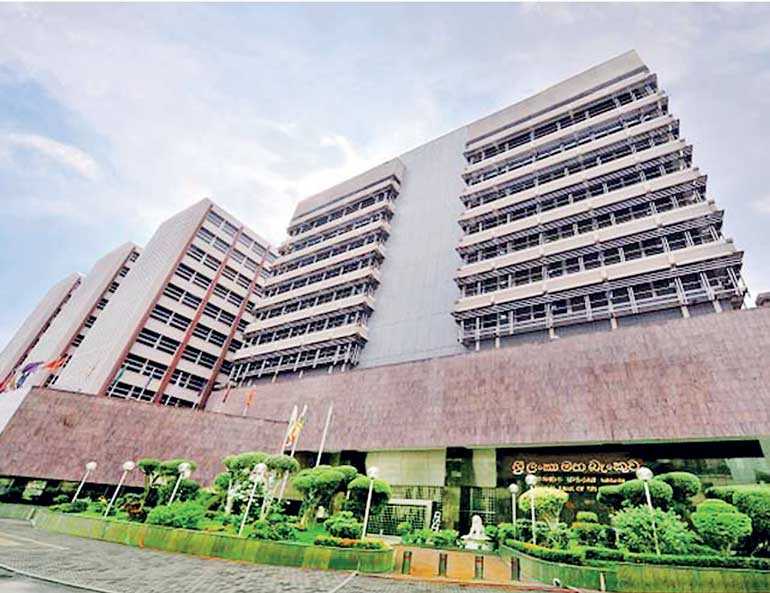Saturday Jan 17, 2026
Saturday Jan 17, 2026
Tuesday, 24 July 2018 00:00 - - {{hitsCtrl.values.hits}}
 The Central Bank is right in one aspect that loosening monetary policy for short term growth is not sustainable
The Central Bank is right in one aspect that loosening monetary policy for short term growth is not sustainable
Last week the Central Bank downgraded the GDP growth target for 2018 to 4.0-4.5% from the previous estimate of 4.5-5.0%.
Creating false expectations
Going back one year, the Central Bank’s and IMF’s growth target for 2017 was also around 4.0-5.0%, although the actual growth turned out to be just 3.1%. The Government’s forecast was even higher at over 5%. Despite this misleading guidance, it was clear to most independent analysts last year that the growth would be less than 4% in 2017. 
As the fiscal policy has tightened further in 2018 with the new Inland Revenue Act in April, and the domestic fuel price increases in May, it would be clear to independent analysts that the growth for 2018 would also be similar to 2017, at best. Hence one cannot expect the growth to be anything above 3.5% for 2018 as well. The 2018Q1 growth of 3.2%, confirms this anticipation. In this light, one wonders the rationale of the estimates of the above entities.
Realistic estimates expose economic policy
Why is it important for the estimates to be more accurate? If the estimates are more realistic, it gives the right sense of expectations for all stakeholders. A GDP growth expectation of less than 4% for the second consecutive year and a revival not anticipated in the foreseeable future would trigger a gamut of questions. Why is the growth low? What should be done to address it, etc.?
The fact that we need to grow annually at around 7% consistently for a couple of decades to reach a satisfactory level of development, reflects the gravity of the problem. Even larger economies such as India and China are growing at comfortably over 6%.
Inaccurate interpretation and faulty prescription
The lame excuse for poor growth in recent years has been pinned on natural factors such as drought, floods etc. The reality is, even with perfect weather conditions, the growth wouldn’t have been anything more than 4.5%, which is a long way off from the desired 6-7%. Therefore it points towards the lack of a strong economic plan.
How should growth be revived? According to many “experts,” it’s through “market reform, improved investment climate, better investment promotion, trade facilitation, etc.”. This is a lot of jargon which many wouldn’t understand. As always, a good plan should be simple, specific and understandable.
The shallow plan of tax concessions and concessionary loans
The Central Bank is right in one aspect that loosening monetary policy for short term growth is not sustainable. We completely agree with this view, as high growth recorded in the past through such measures had been limited to a few years and has not sustained.
The first thing the policymakers should do is to sit down and short list a handful of sectors that would drive the Sri Lankan economy over the next 10 years and beyond. For example, let’s assume it’s tourism, port-related industries and IT/BPO. Then the policymakers could engage the relevant industry bodies to draft a road map to grow each of those sectors by multiple times in that time horizon (for example a road map to increase annual Tourism earnings from the current level of $ 3.5 b towards $ 10-15 b). This would give a good understanding of what bottlenecks these industries are facing.
A common fault of the policymakers is to give some tax concessions and concessionary loans to some industries and think they have given the required boost and the rest is up to the private sector. In reality, these industries may not even need such tax concessions and concessionary loans. What they desperately require could be more specific such as: the availability of right skilled labour, transfer of the required technology, electricity tariffs which are competitive compared to other competing countries etc.
Decisive direction in Government budget is vital
Once these requirements are well understood, the crucial factor would be to direct fiscal policy to facilitate speedy growth in the identified sectors. For example, if the need of the hour of the IT/BPO industry is thousands of more right skilled labour, the Government budget allocation could be increased for development of IT Universities and education. The Government’s annual budget allocations should clearly reflect the strategic direction of the country.
While the IMF has advocated and praised the tightening of fiscal policy, the Government has boasted about the increased tax revenue. However such fiscal tightening measures have a curtailing impact on economic growth. In fact in our view, it is the prime reason for faltering growth in recent past.
As highlighted above, the need of the hour is not to reduce the fiscal deficit as prescribed by the IMF which is driving down economic growth, but to realign it so that it drives long term, sustainable growth. Once the economy gains momentum, fiscal deficit could be narrowed in the long run. A clear direction of the Government would give the right guidance to private sector and foreign investors and such focus would naturally flow in FDIs as well.